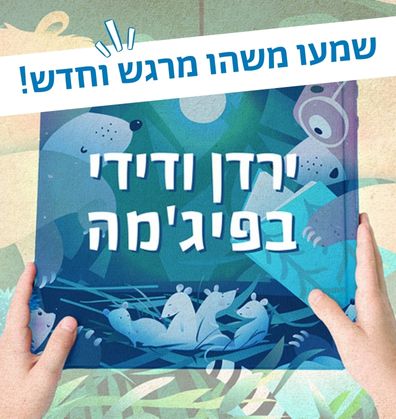סְּפָרִים
Book-Related Family Activities
Close to home, dear to our heart
What is your favorite place? Is it at home? Is it nearby? Or is it far away from home? You can share with one another: What is your special place, what do you like about it, and what is special about it.
The Bus Stop

The grace of a place
You can find good things everywhere; every place has some beauty. Take turns choosing a place, whether near or far, in Israel or elsewhere, real or imaginary, and have the other participants ask questions about it to discover what makes it so wonderful.
The Bus Stop
A good station
How can a bus station make people happy? Scan the QR code and watch the schoolchildren’s heartwarming initiative in Jerusalem.
The Bus Stop

In our environment
What is happening near your home? Go on a short walk outside, and try to discover how you can do good in your own surroundings: How about picking up litter and placing it in the recycling bin? Or offering people waiting at the bus station a drink of water? Or setting up a library on your street with your neighbors?
The Bus Stop

More arts & crafts, songs and activities can be found on the Sifriyat Pijama Pinterest page.
The Bus Stop
Listening to the story
Please scan the QR code to listen to the story. You may enjoy turning the pages of your book as you do.
The Boy Who Wouldn’t Sleep Alone
Dramatizing the story with toys
Your children’s favorite stuffed animals and other toy animals can also be part of the story: Add or omit one each time as you act the story out together.
The Boy Who Wouldn’t Sleep Alone
Playing a game of ‘Who is sleeping under the blanket?’
Ask your toddlers to close their eyes, and hide a stuffed or other toy animal under the blanket. When they open their eyes, you, parents, can give them hints as to the identity of the hidden animal, until your toddlers guess what it is. Does it bark? Does it hop around and eat carrots? You could also switch roles, letting your toddlers give you, parents, hints about who is hiding there, underneath the blanket.
The Boy Who Wouldn’t Sleep Alone
פינטרסט
Arts & crafts, stars and goodnight songs are available on the Sifriyat Pijama Pinterest.
The Boy Who Wouldn’t Sleep Alone
Reading together
We recommend reading the book on your own, before reading it together as a family. Familiarizing yourself with the book in advance will help you read it afterwards at the pace and sequence suitable for your children. Enjoy reading this book together!
The Wolf Will not Come
A discussion on waiting
Have you ever had to wait for something? Perhaps you could share that experience, and tell each other about anticipation. You could also come up with ideas together of what you could do while waiting, or tell each other what you chose to do in those instances while you waited. What happened in the end?
The Wolf Will not Come
An illustrator at work
How do you illustrate a bunny? Or a wolf? Scan the QR code and watch illustrator Ronan Badel illustrating the characters in this book.
The Wolf Will not Come
Illustrations and clues
Look at the final illustrations in this book. Can you find any indications for the birthday party the wolf had almost missed? And which presents did the bunny get? And what was special about the wolf’s gift?
The Wolf Will not Come
A game of “Wolf in motion”
Leaf through this book and decide the order of play. Take turns looking at the illustration you have each selected and acting out the depicted wolf’s motion: Is it going up in the elevator? Or walking on all fours? The other players will have to guess what the wolf is doing.
The Wolf Will not Come
Arts & crafts, songs and other activities are available on the Sifriyat Pijama Pinterest page
The Wolf Will not Come
A discussion on fear and encouragement
As our children grow up, they experience various fears, but discussing them helps them to cope with them, while instilling in them a sense of security. Together you can choose to discuss what they find scary, and what helps them overcome their fears.
Up and Over
Listening to a story
Would you like to hear Maayan and listen to everyone cheering her on? Scan the code and listen to the story together.
הַסִּפּוּר לְהַאֲזָנָה – עַכְשָׁו בָּפּוֹדְקַאסְט שֶׁל סִפְרִיַּת פִּיגָ’מָה!
Up and Over
בגן At the playground
After reading this book, you may enjoy going to the playground together, and trying out the equipment together as well as separately. Perhaps you would like to invent a special course from the slide to the swing and so on that would bring joy to all of you.
Up and Over
Family encouragement
“Hooray, Maayan!” Everyone calls out when Maayan is scared. How do you cheer one another on? Perhaps you could come up with family words of encouragement, find a motivating song, or a chant you all agree on that cheers you up and gives you strength.
Up and Over
Pinterest
Find more inspiration and creative activity in our Pinterest page.
Up and Over
Discussion
Nuri and Grandpa spend time together, and it’s nice. You may want to discuss and discover the following with your children: What do they like doing with their grandfather, grandmother, or other family members? Is there anything that they wish to learn from them? Perhaps they have a question that they wanted to ask and were too embarrassed to do so?
Nuri’s Tunnel
Looking at the illustrations
Which treasures can be found in Grandpa’s cave? You may want to look at the illustrations and think about how they ended up being buried in the ground, and to whom they belonged. You could also imagine what might be hidden in the ground underneath your own home.
Nuri’s Tunnel
Introducing the mole
What is a mole? Moles are rodents living in underground burrows. The shape of their bodies is suitable for living in burrows as it is long and cylindrical. The moles’ touch and hearing are evolved, and they eat plants that grow in the ground. If you want to know more, please look for information on moles online.
You could also be a mole for a day!
Make a tunnel out of sofas, bed sheets or pillows, go into it carefully and crawl out. You could also turn off all the lights at home, and use a flashlight to go left, right, backwards and forwards, overcome various obstacles and… reach your destination!
Nuri’s Tunnel
What's the question?
You may enjoy playing the following game and finding out what happens when we answer before we ask: One player says an answer, and the other players try to guess what the question was. for instance, the answer “My name is Nuri” will be met with the question “What’s your name?”. Which questions match answers such as “I’m five years old” or “a purple monster”?
Nuri’s Tunnel
Nuri’s Tunnel
Illustrations tell a story
The illustrations in this book demonstrate how Itamar and the rabbit imagined one another versus what they really look like. You may want to check and compare: Do the monsters resemble the real child and rabbit? Are there any similarities between the monsters both Itamar and the rabbit had imagined?
Itamar Meets a Rabbit
Discussion
Were you, parents, also afraid when you were younger? Perhaps you could tell your children what you were afraid of, and how you grappled with your fear. You could also listen to your children as they tell you what scares them, and together, think of ways to overcome the fear.
Itamar Meets a Rabbit
Pleased to meet you: Monster
What does a scary monster look like? How about drawing one together, and then trying to imagine: What is the monster’s name? Who are its friends? What does it enjoy doing, and what is it afraid of? Now that you’ve gotten to know the monster, it may be worth asking yourselves whether it is still as scary as it was before.
Itamar Meets a Rabbit
A family magic word
“Jimalaya Jim! Zuzu buzu Yam Pam Puzu!” Each of the characters in this book has a magic word it uses when something scary happens. What is your magic word? You’re welcome to chose a family magic word together, and think of times when it would be appropriate to use it.
Itamar Meets a Rabbit
Itamar Meets a Rabbit
You are welcome to leaf through the book
You are welcome to leaf through the book, and look at Lena Guberman’s unique illustrations closely. Make sure you read the words and signs in the illustrations too! Has anything about the illustrations made you laugh? They are all made of colorful fabrics, thread, and wool. Perhaps you would also like to look for a piece of cloth or an old sock, cut it up, glue or sew it together, to make your own special artwork.
Yirmiyahu Street
You may want to discuss the Haruvis' demand for quiet, and their neighbors' responses with your child
You may want to discuss the Haruvis’ demand for quiet, and their neighbors’ responses with your child. Have you ever been asked to change your habits in order to be more considerate of others, such as family members or neighbors? Did that request seem reasonable or over the top? Having read the story together, you may be reminded of your own neighbors. Who have you not seen in a while, and would like to invite over to your house?
Yirmiyahu Street
Perhaps you would like to take a walk around the neighborhood
Perhaps you would like to take a walk around the neighborhood. What does it look like? Who are your neighbors, and do you know them all? Do you spend time together, or help each other out? You may want to draw or make a model of your neighborhood together, and add those who live in each apartment or house.
Yirmiyahu Street
Would you like to play "silence"?
Would you like to play “silence”? You’re welcome to whisper to one another, play in silence, walk on tiptoes, eat quietly, and even try to laugh without making a sound. Would you have passed the Haruvis’ “quiet neighbor test”?
Yirmiyahu Street
You may enjoy discussing the following with your family or sharing it with your neighbors:
You may enjoy discussing the following with your family or sharing it with your neighbors: Does anything require improvement or repair in your shared space? You could initiate some neighborhood activities, such as decorating the shared stairwell, planting a community garden, or helping one another in your community. Put together an action plan, and get started.
Yirmiyahu Street
Laughter is an easy and fun way of coping, it makes you happy, and can even be contagious
Laughter is an easy and fun way of coping, it makes you happy, and can even be contagious. Perhaps you would like to try laughing while making every possible sound: Hoo hoo hoo, Ho ho ho, Ha ha ha, He he he, Hee hee hee. Start laughing and change sounds each time. Did your laughter “roll and tickle”? Did it lift your mood?
Yirmiyahu Street
Proposed Family Activities:
- Unlike stories, a collection of poetry can be read in any order. Which poems were your favorite? And your child’s? Feel free to read the book over and over again, asking your child to pick just one or two poems at a time, and returning to your favorites time after time. After a while, your child will know the poems, and join in on your reading, completing the rhyming lines.
- Each of the poems in the book can be acted out using items found in every home. You may want to select one of your favorite poems and act it out together. You could also put it to music, or a certain rhythm, using a musical instrument. You may also enjoy putting together a small dance to go with your favorite poem.
- You may like to ask your child to place their head on your lap and close their eyes. As you read, ask your child to imagine the poem, and try to think how they might have illustrated it. When your child opens their eyes again, show them Inbal Leitner’s illustration, and ask them whether they had imagined the poem as Inbal had. Perhaps you would then like to draw the illustration as you imagined it would be.
- If you look at the illustrations, you will notice the embroidery by Elina Zashkevich-Chipiga. Perhaps you could also take out colorful thread, and embroider your child’s name onto their backpack, or decorate a pillow cover.
- Shlomit Cohen Asif’s poems provides us with insight into a child’s inner world, as well as a wonderful opportunity to hold an open discussion on feelings. In the poem Fear sat on the blue chair, even Fear is scared of being alone. You may want to share your fears with one another, and try to find ways to overcome them together.
- White sheet, what will you become? Let your imagination run wild with a white sheet of paper. You could write, paint, or doodle on it, roll it into a ball, make a tiara out of it, or perhaps a kite, or pirate ship, being creative and drawing inspiration from the poems in the book.
- Shlomit Cohen Asif has written over 70 books. Do you know any other work by her? You may want to look for more stories and poems by her at home, in your kindergarten library, or the public one, and enjoy reading them together.
Enjoy reading and discussing the book together!
Shlomit Cohen Asif was born in Iraq in 1949, and immigrated to Israel with her family at the age of 18 months. She wrote dozens of children’s books containing tales, stories, and poems. Among her well-loved works are Mamushi the Rabbit, Three Nice Mice Birthdays, and When the Star fell into a Puddle. Shlomit Cohen Asif is a well-loved and respected writer, and many of her poems have been put to music, translated into foreign languages, and adapted to stage productions. Over the years Cohen Asif has won many awards for her work, among them the Ze’ev Prize for Children’s Literature, the Bialik Prize, and the ACUM Prize for Lifetime Achievement in Children’s Literature.
Color Number Eight
Suggested Family Activities
- Ora Ayal has illustrated many famous Israeli children’s books. Her style is simple and easy to identify, and her books have put smiles on the faces of thousands of children around the country. You can set off on a journey through the story’s charming illustrations, and follow Tali as she turns the “yellow-and-black something” into an imaginary lion.
- Take a look at the front and back covers of the book. What is portrayed on the front, what is on the back, and how are they connected?
- You can look for the illustration of Tali and the lion swinging from a branch. Notice the expressions on their faces. Now who is afraid?
- Can you discover the faces hiding in the colored illustrations? Who are they?
- What are Tali’s daddy and the other people in the waiting room doing while Tali and the lion set off on their adventure?
- The imaginary lion transforms as Tali approaches him, takes control, and eventually befriends him. You can stand together in front of a mirror and imitate the lion’s facial expressions on each page.
- Things we fear often seem large and forceful at first. As we overcome our fear they become lighter and we sense relief. After her visit to the dentist Tali was no longer afraid, and the lion returned to his bag and once again became a “yellow-and-black something”. You can look for a colorful shawl, piece of material or blanket that can be contained inside a handbag. Your children can remove the shawl or material from the bag, don it on their shoulders and pretend they are a lion.
- What did you fear when you were young? Sharing your life experiences with your children and telling them how you overcame your fears can help them expand their “tool box” for overcoming their own fears.
- “Something Yellow and Black” is the last book distributed this year through Sifriyat Pijama. The school year is coming to an end and soon your children will set off on new experiences – whether they move to a different kindergarten or start elementary school, or join the group of older children in the same setting. We hope that this story and the ensuing family discussion will help your children in their adjustment to the new circumstances. Wishing you a wonderful vacation from Sifriyat Pijama!
Something Yellow and Black

Suggested Family Activities
- It all began with a misunderstanding and hurt feelings, and then “Now you’ll see what’s going to happen!” After reading the story together you may discuss intentions and misunderstandings among friends, and share experiences with one another.
- Like Kramer the cat, we all feel big at times and small at other times. You can ask your children when they feel big and when they feel small, and talk about the advantages and disadvantages of each.
- “Scratches, bites, jumps and somersaults” – that’s how the author Meir Shalev describes cat games. You can flip through the book, select one of the animals and act out that animal’s movements.
- Kramer is very fearful of the large animals he meets in the forest. This can be an opportunity to discuss with your children caution and safety rules, fears, and ways to overcome fear.
- Kramer’s friends teach him an important lesson in friendship: A good friend is one who knows how to forgive and to apologize. You can look for the illustration where Kramer’s friends meet him in the forest, and note the expressions on their faces.
- Yossi Abulafia’s rich illustrations depict an array of animals – some domestic, others wild. You can look at the illustrations with your child and see how many of the animals you recognize. Does your child know all the animals’ names? Which of them can be found near your house? You can go for a hike. Which animals, large and small, do you meet on the way?
- You can act out the story using stuffed animals and toys. Allow your children to select the dolls to represent Kramer, his friends from the garden and the forest animals. The animals can be happy, be afraid, play together and quarrel – and, in the end, make amends and apologize.
- After reading the book together you can look at the picture of Kramer sleeping in his bed, choose a doll or stuffed animal and guide it to sleep by reading a “Sifriyat Pijama”
bedtime story.
Kramer the Cat Goes into the Forest
Suggested Family Activities
- Do your children have a favorite doll or stuffed animal? After reading together the story about Maya and her kangaroo, you can discuss the special feelings we have toward objects, toys or stuffed
- You can take a picture of your children holding their stuffed animal, print out the photograph and decorate a frame for it. The framed photograph will serve as a memento in future years and will remind your children of the special relationship they had with the doll when they were
- The illustrations that accompany the story hint at changes in the blue kangaroo’s feelings, as more and more stuffed animals join him in Maya’s bed. You can flip through the pictures with your child and ask them to describe how they think the kangaroo feels on each
- Each night before going to sleep Maya recites “I love you, Blue Kangaroo”. Even when new dolls and toys are added, she ends her recitation with the same line. How do you get ready for bed? Do you have a special bedtime song, recitation or ceremony?
- You might want to discuss with your children why they think Maya agreed to share so many toys with her baby brother, but woulddn’t give away the blue kangaroo. Do your children have toys or dolls that are easier to share, and others they refuse to part with?
- Together with your children you can look for the pictures of Maya’s baby brother. You can tell the story through his eyes, and try to think how he feels as the story
- Maya and the blue kangaroo have a special relationship, which is not weakened as new dolls are added. Do you and your children have special relationships with family or friends? You can talk about this with your children, and reinforce their confidence in your feelings toward them.
- The gifts that Maya receives throughout the story are new and shiny, while the old kangaroo is old and worn. Sometimes we too prefer things that are new and shiny, and it can be hard to decide what to give up. The story can lead into a family discussion on loyalty, weighing considerations and making difficult
- The blue kangaroo feels crowded in Maya’s bed, but many times it is warm and cozy to lie together in bed! You can cuddle up and read books together in bed, and following this story, add more and more dolls and stuffed animals. You can also sing together fun songs like “Shovavim Bamita” by Datia Ben-Dor:
Maya’s Blue Kangaroo
Family Activities:
- Together with your children, take the time to look closely at Na’ama Benziman’s beautiful illustrations. You may want to stop at the page where Emilia approaches the three steps leading to the preschool, and note the changes in her facial expression.
- After reading the story, you can make up your own fantastic story and draw it.
- Emilia really wanted to enter the classroom on her own, “without any problems and without making a scene”. You and your child can look at the first illustration in the book, that depicts Emilia saying good-bye to her mother, and compare the entrance to her classroom with your child’s schoolyard. What helps your child say good-bye and go into the classroom in the morning? Do you have a special ceremony or technique that eases the separation? After reading the story about Emilia, you may want to invent a new way to say good-bye in the morning, a way that will help your child feel grown-up and brave.
- Like Emilia, each one of us feels sometimes big and other times small. You can read the story together again and take note of the points in the plot when Emilia feels big and when she feels small. You might ask your child when they feel big and small, and emphasize the advantages of each condition.
- Emilia’s friend Dana enters the story at precisely the moment when Emilia is feeling lonely. You can use this as an opportunity to talk about friendship. You might ask: What do we like to do together with our friends, when do we prefer to be alone and what is more enjoyable to do together with others?
- Dana is very happy to see Emilia, and they play together. You too can play together and even make your own tea party like the girls in the story. What will you serve at your tea party, who will be big and who will be small? You can invite other family members, dolls or stuffed animals to join your party.
- You can recount all the things your child knows how to do alone, and some tasks he or she needs help with. You might want to share an experience of your own, and tell your children about a time when you overcame an obstacle on your own – and when you were helped out by family or friends.
- Emilia’s journey into the classroom is depicted like a dream. You might want to talk to your child about dreams. Do you remember your dreams? You can try to draw a picture of one of the dreams you or your child dreamt.
- You may want to take this opportunity to share one of your own childhood experiences with your child. Did you attend preschool? If so, do you remember being sad saying good-bye in the morning? With whom did you play, and what did you like to do with your friends? You might want to compare your preschool with your child’s current classroom.
EMILIA
רעיונות שהציעה נעמה בנזימן לפעילויות עם הילדים סביב האיורים שבספר
לחצ/י כאן לרעיונות שהציעה נעמה בנזימן לפעילויות עם הילדים סביב האיורים שבספר
EMILIA





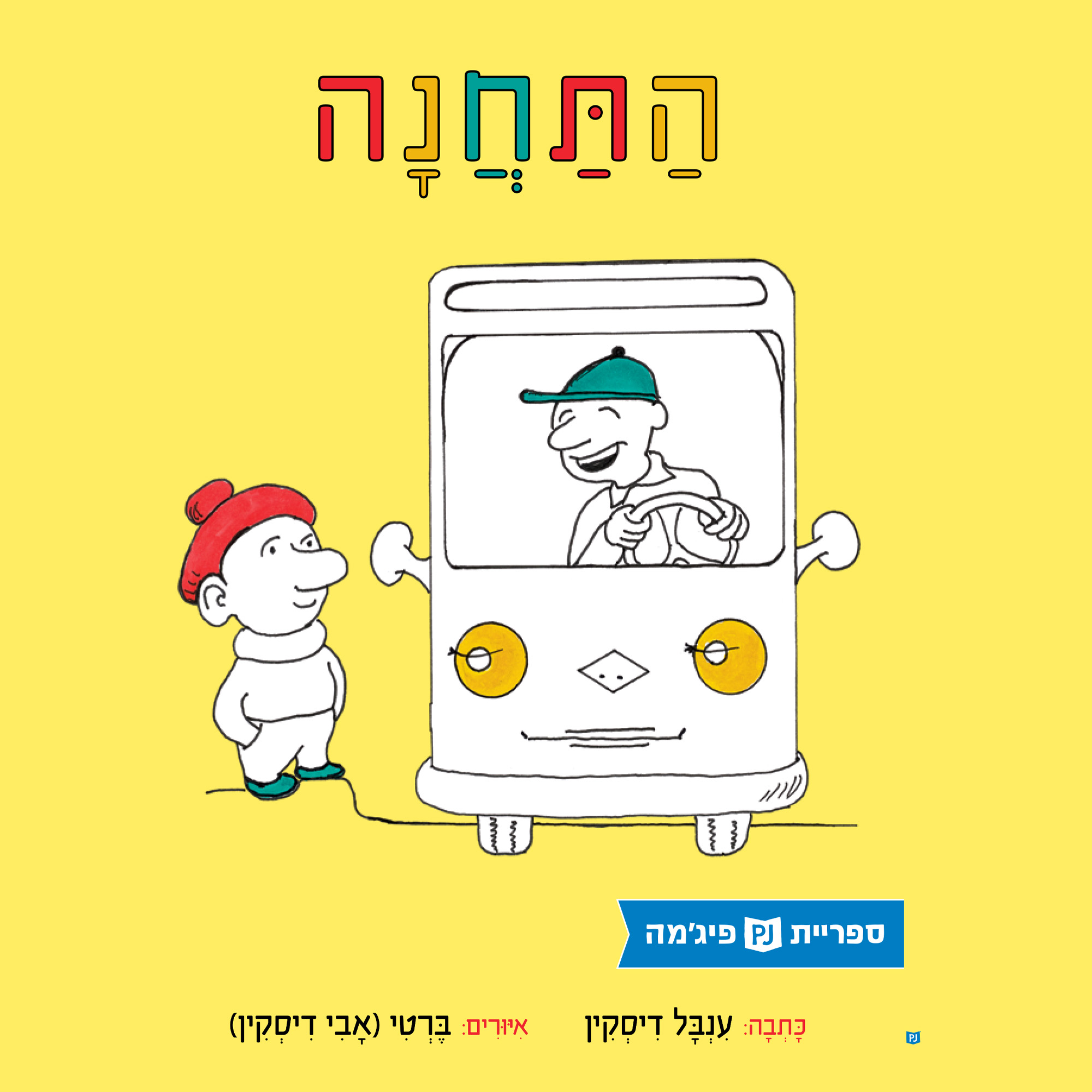 The Bus Stop
The Bus Stop 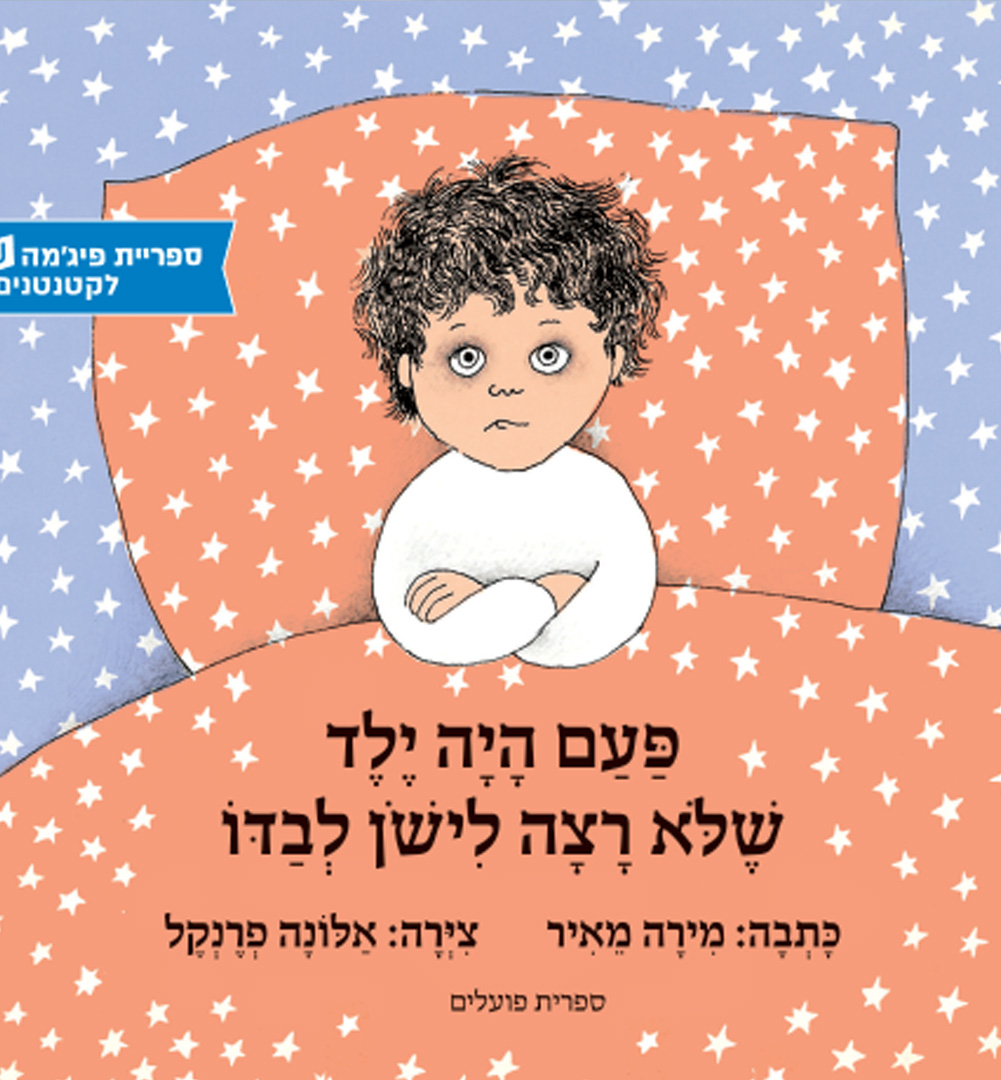 The Boy Who Wouldn’t Sleep Alone
The Boy Who Wouldn’t Sleep Alone 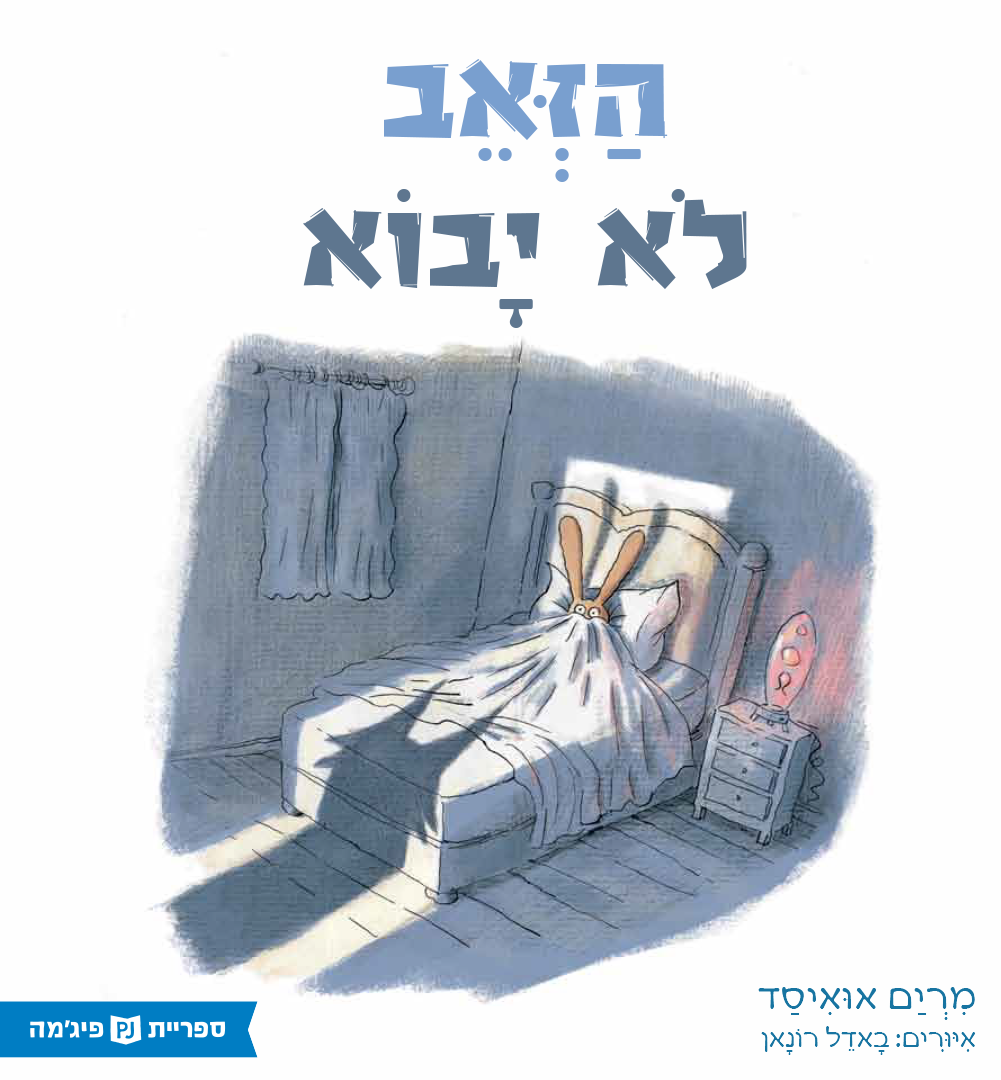 The Wolf Will not Come
The Wolf Will not Come 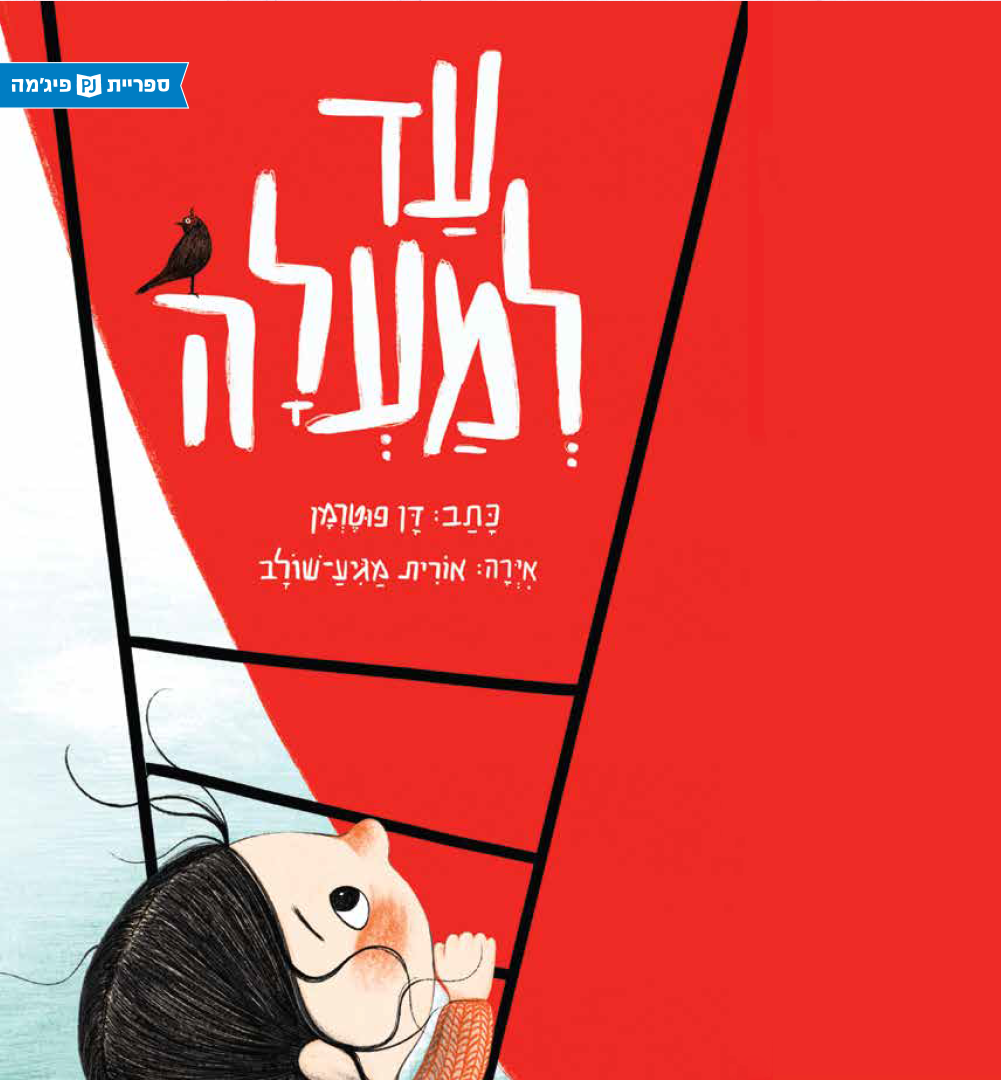 Up and Over
Up and Over 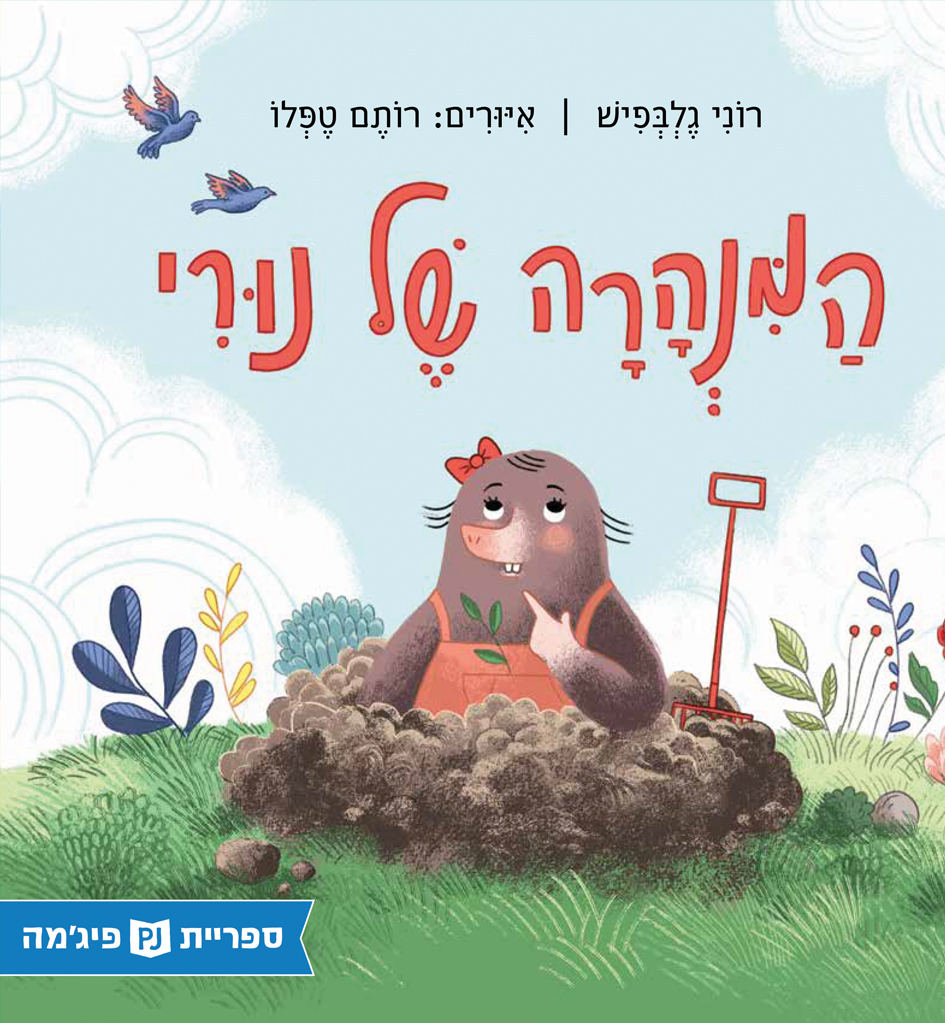 Nuri’s Tunnel
Nuri’s Tunnel 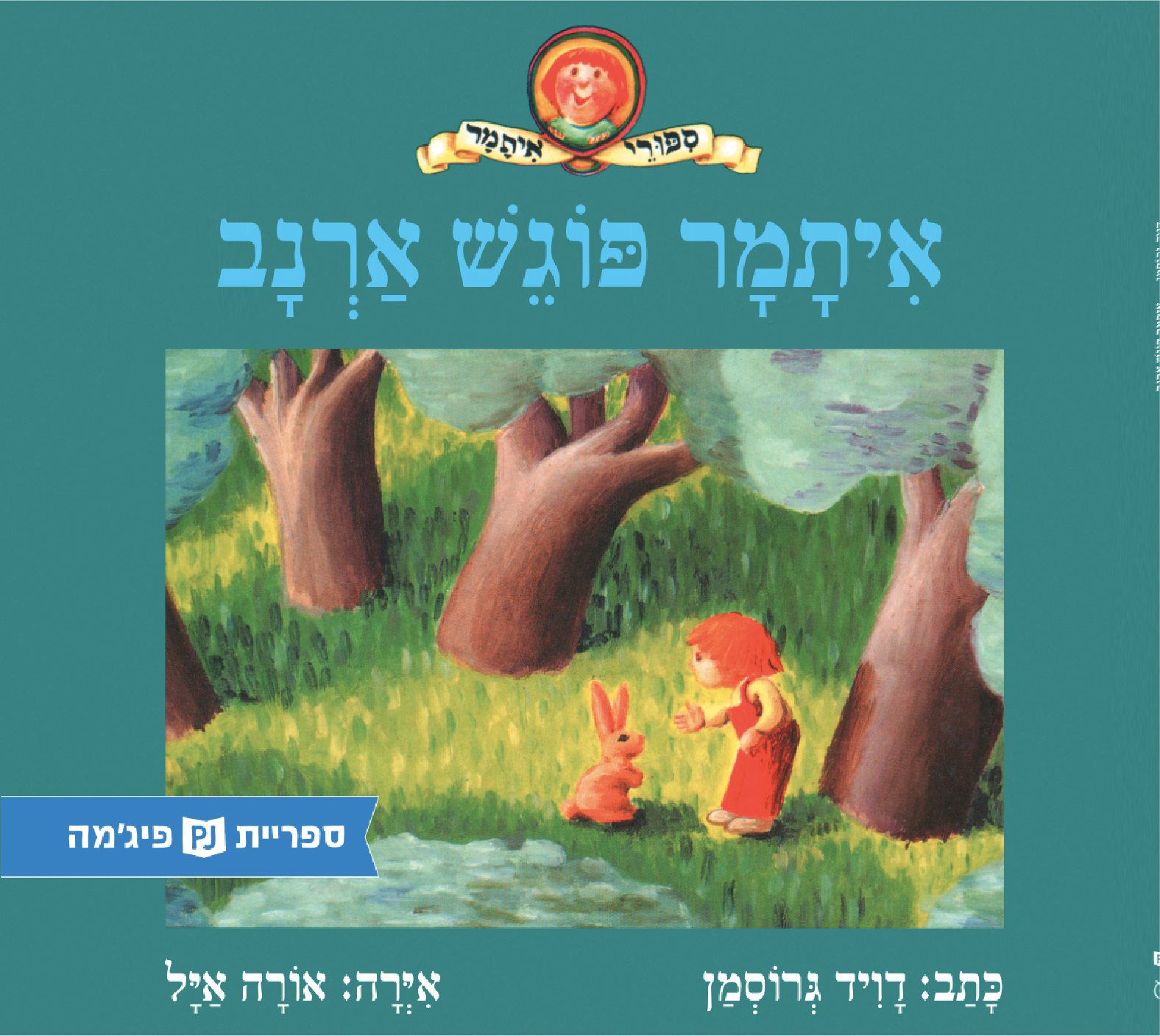 Itamar Meets a Rabbit
Itamar Meets a Rabbit 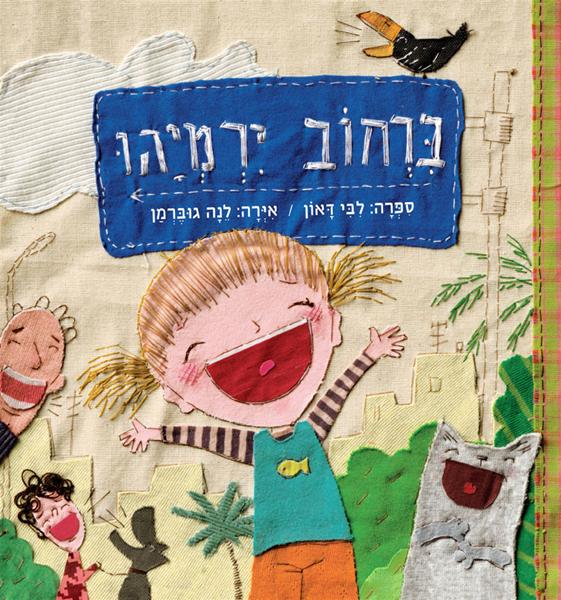 Yirmiyahu Street
Yirmiyahu Street 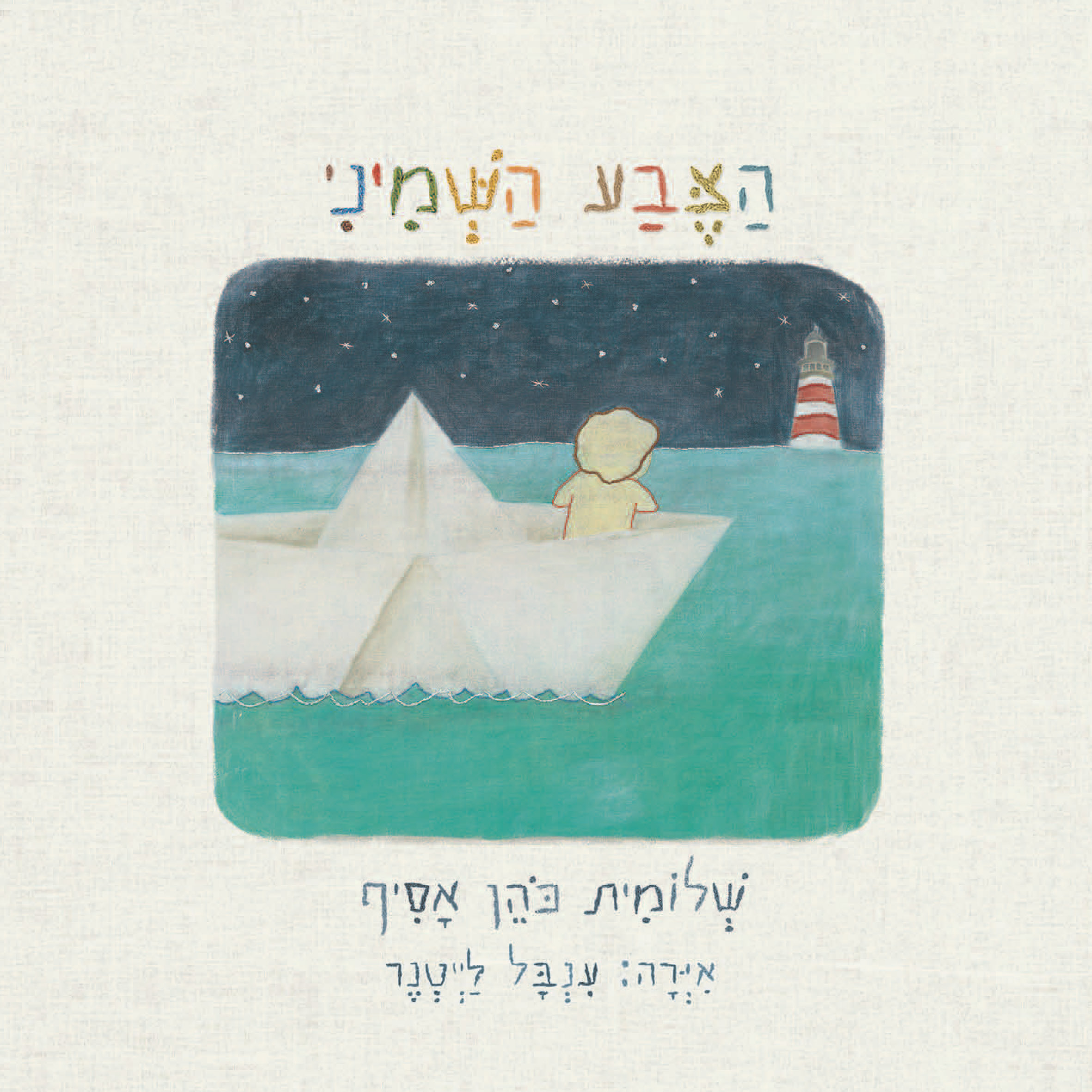 Color Number Eight
Color Number Eight 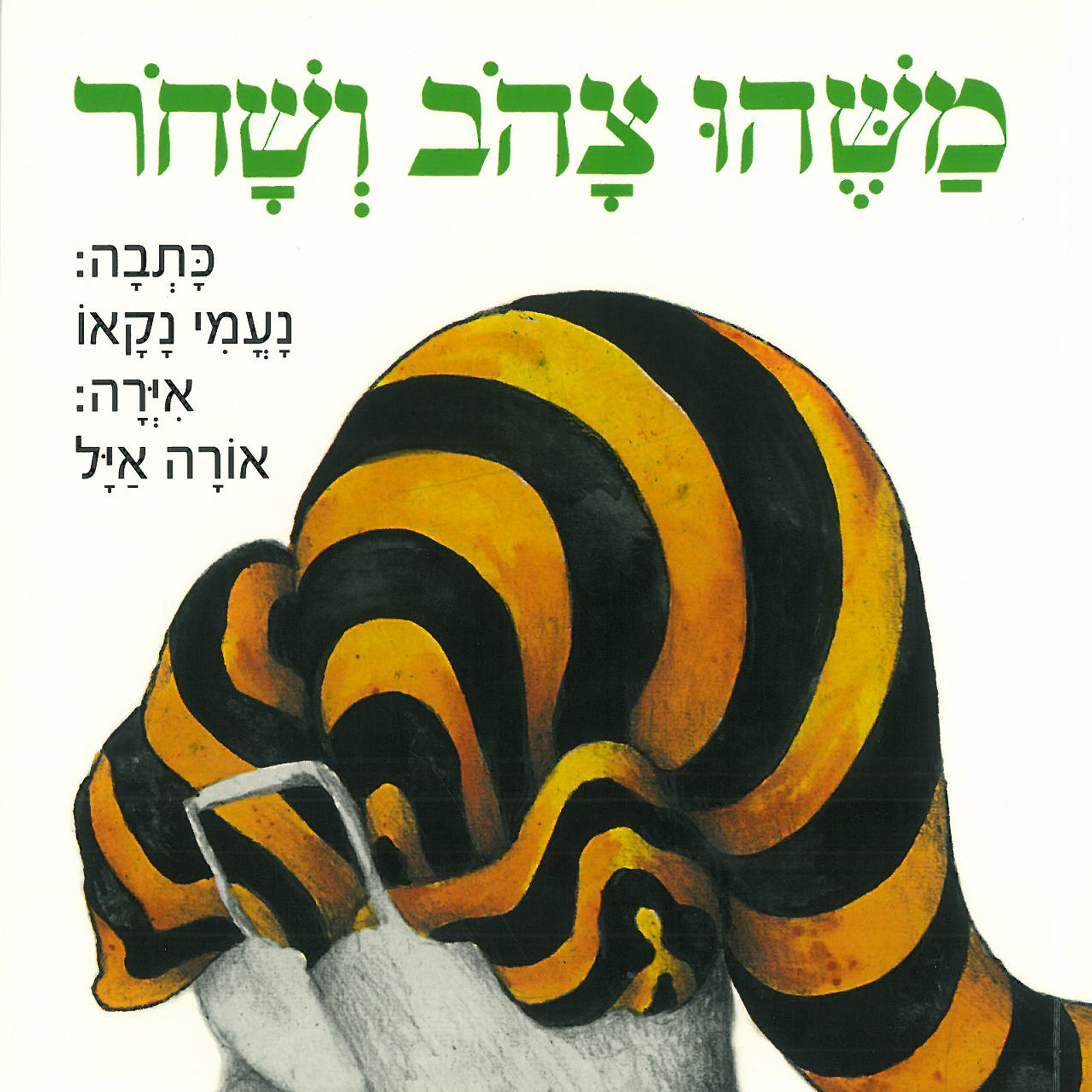 Something Yellow and Black
Something Yellow and Black 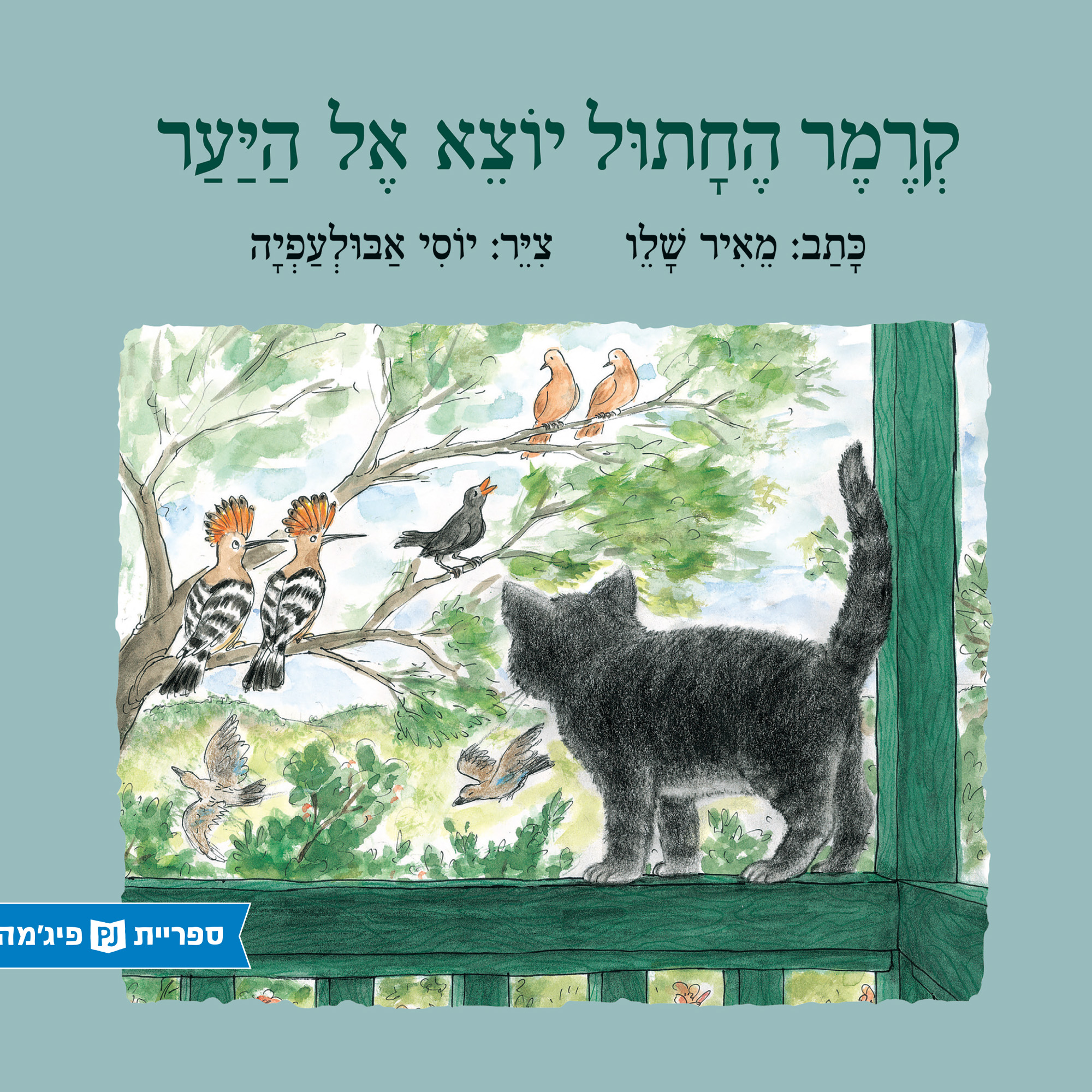 Kramer the Cat Goes into the Forest
Kramer the Cat Goes into the Forest 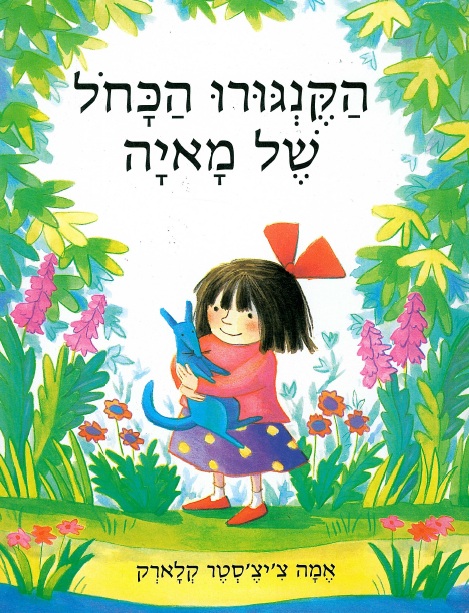 Maya’s Blue Kangaroo
Maya’s Blue Kangaroo 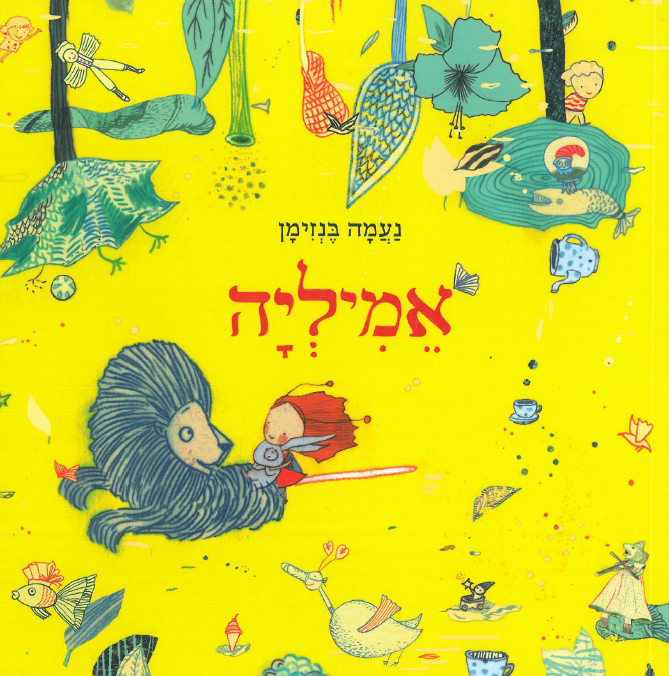 EMILIA
EMILIA  שִׂיחָה
שִׂיחָה מִשְׂחָק
מִשְׂחָק סִרְטוֹנִים
סִרְטוֹנִים לָצֵאת הַחוּצָה
לָצֵאת הַחוּצָה הַשְׁרָאָה
הַשְׁרָאָה שֵׁמַע
שֵׁמַע הַמְחָשָׁה
הַמְחָשָׁה קְרִיאָה
קְרִיאָה הַעֲשָׁרָה
הַעֲשָׁרָה חֵקֶר
חֵקֶר יְצִירָה
יְצִירָה כְּלָלִי
כְּלָלִי


